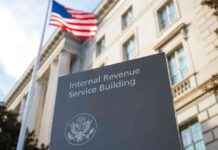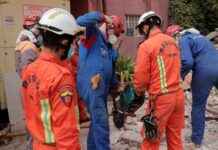China Launches Recruitment Drive for Planetary Defense Force Amid Rising Asteroid Threat
In a race against time, China has initiated a recruitment campaign for a specialized planetary defense force following the discovery of asteroid 2024 YR4, which poses a potential threat of colliding with Earth in 2032. The State Administration of Science, Technology, and Industry for National Defence (SASTIND) is leading the charge to bolster international collaboration and develop cutting-edge asteroid mitigation technologies.
The call to action is primarily aimed at young graduates under the age of 35, with a keen focus on individuals skilled in aerospace engineering, asteroid detection, and international cooperation. Prospective candidates are required to possess a minimum of a master’s degree in astrophysics, aerospace science, or Earth and space exploration technology. Their primary duty will involve overseeing monitoring systems and implementing early warning mechanisms for near-Earth asteroids.
Global Concerns Escalate Over Planetary Defense
As the world grapples with mounting concerns regarding planetary defense, the spotlight has shifted to NASA’s Planetary Defense Coordination Office (PDCO), which was established in 2016 to identify, track, and evaluate the threat posed by near-Earth objects (NEOs). Despite NASA’s recent success with the DART (Double Asteroid Redirection Test) mission, which altered the trajectory of the asteroid Dimorphos in 2022, experts caution that current planetary defense systems are primarily focused on hazard identification rather than active mitigation.
The advent of asteroid 2024 YR4 on February 7, 2025, via the Gemini South telescope in Chile has raised alarms, given its estimated size of 177 feet, large enough to cause significant regional devastation upon impact. While the urgency of China’s response is apparent, many believe this recruitment drive signifies more than just a reaction to the 2024 YR4 asteroid. Some view it as a strategic move to assert dominance in space security and technology while also potentially addressing employment needs.
China’s Foray into Planetary Defense and Space Exploration
China’s proactive stance extends beyond recruitment, with plans for its first asteroid deflection test scheduled for 2027, targeting the asteroid 2015 XF261. Drawing inspiration from NASA’s DART experiment, China aims to replicate the success of redirecting asteroids. However, skepticism looms over the effectiveness of this approach, with experts cautioning against the risk of fragmenting the asteroid rather than altering its course.
Despite the prevailing concerns associated with asteroid threats, planetary expert Harrison Agrusa emphasizes that existing technology is equipped to handle asteroids of this size. Agrusa asserts, “This asteroid doesn’t pose an imminent danger; rather, it necessitates thorough research and understanding.”
The Lunar Race: A Paradigm Shift in Global Space Leadership
As China and the United States vie for supremacy in space exploration and defense, the dynamics of the space race have evolved significantly. Unlike the Cold War era competition between the U.S. and the Soviet Union, the current rivalry is characterized by grander ambitions, including establishing lunar bases and securing a foothold beyond Earth’s atmosphere.
Race to Build Lunar Bases
Both nations are heavily investing in unmanned probes to gather critical data for lunar base construction. China’s Chang’e-6, -7, and -8 missions are slated for deployment by the decade’s end, while NASA’s Artemis program faces setbacks due to technical glitches, delays, and budgetary constraints. Notably, the cancellation of NASA’s VIPER rover mission, intended to explore water ice at the Moon’s south pole, underscores the challenges faced by the agency.
Despite setbacks, the U.S. maintains a lead in launching a robust lunar rocket, exemplified by the Artemis II mission, set to orbit the Moon with astronauts aboard. In contrast, China’s Changzheng-10 (Long March-10) rocket is anticipated to debut post-2027, with the larger Changzheng-9 not expected to be operational until the 2040s.
Closing the Gap: Challenges and Opportunities
The U.S. leverages the Orion spacecraft for crewed missions, with successful lunar orbits achieved in 2022. Conversely, China is developing a next-generation spacecraft, currently confined to low Earth orbit testing. While Orion enjoys a competitive edge, potential delays or technical impediments could provide China with an avenue to narrow the gap.
The advent of lunar landers poses a significant hurdle in the race for lunar dominance. China’s specialized lander, modeled after Apollo-era modules, is poised for operation by 2030. Meanwhile, NASA progresses with the Blue Ghost lander, scheduled for touchdown on March 2, 2025. Collaborating with SpaceX, NASA aims to utilize a modified Starship for the Artemis lunar landing mission in 2025.
The Road Ahead: Lunar Exploration Becomes Reality
Despite the intricacies and uncertainties surrounding the lunar race, both China and the U.S. forge ahead, undeterred by technological and financial obstacles. The future remains unwritten, with the potential for China to either rival or complement NASA’s endeavors in lunar exploration. One thing remains certain: the realm of lunar exploration is no longer confined to science fiction—it is swiftly transitioning into reality.
































